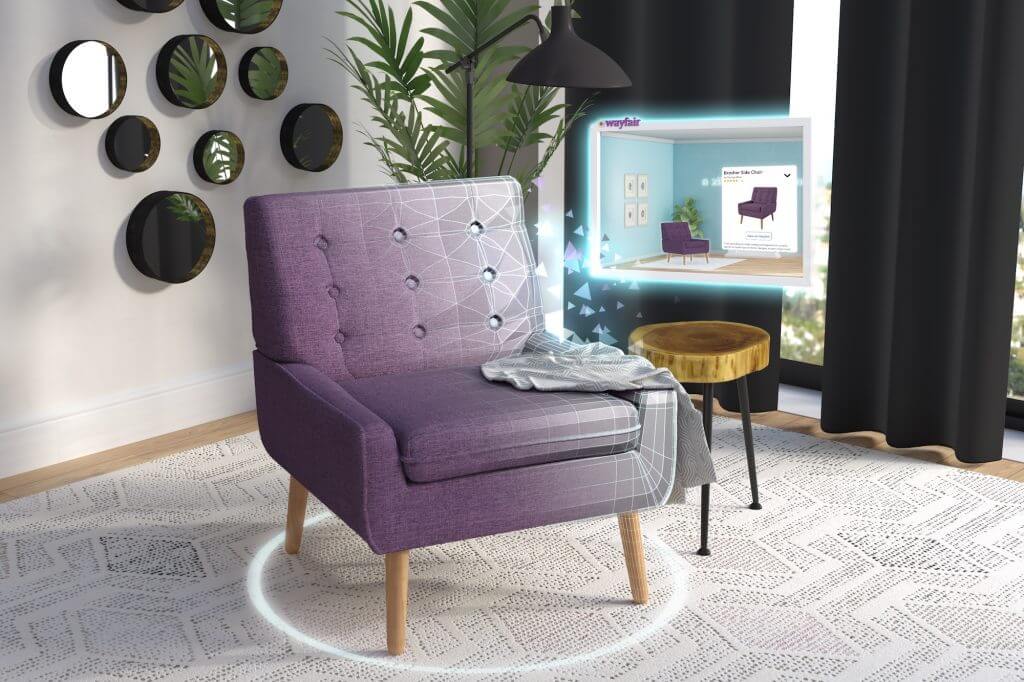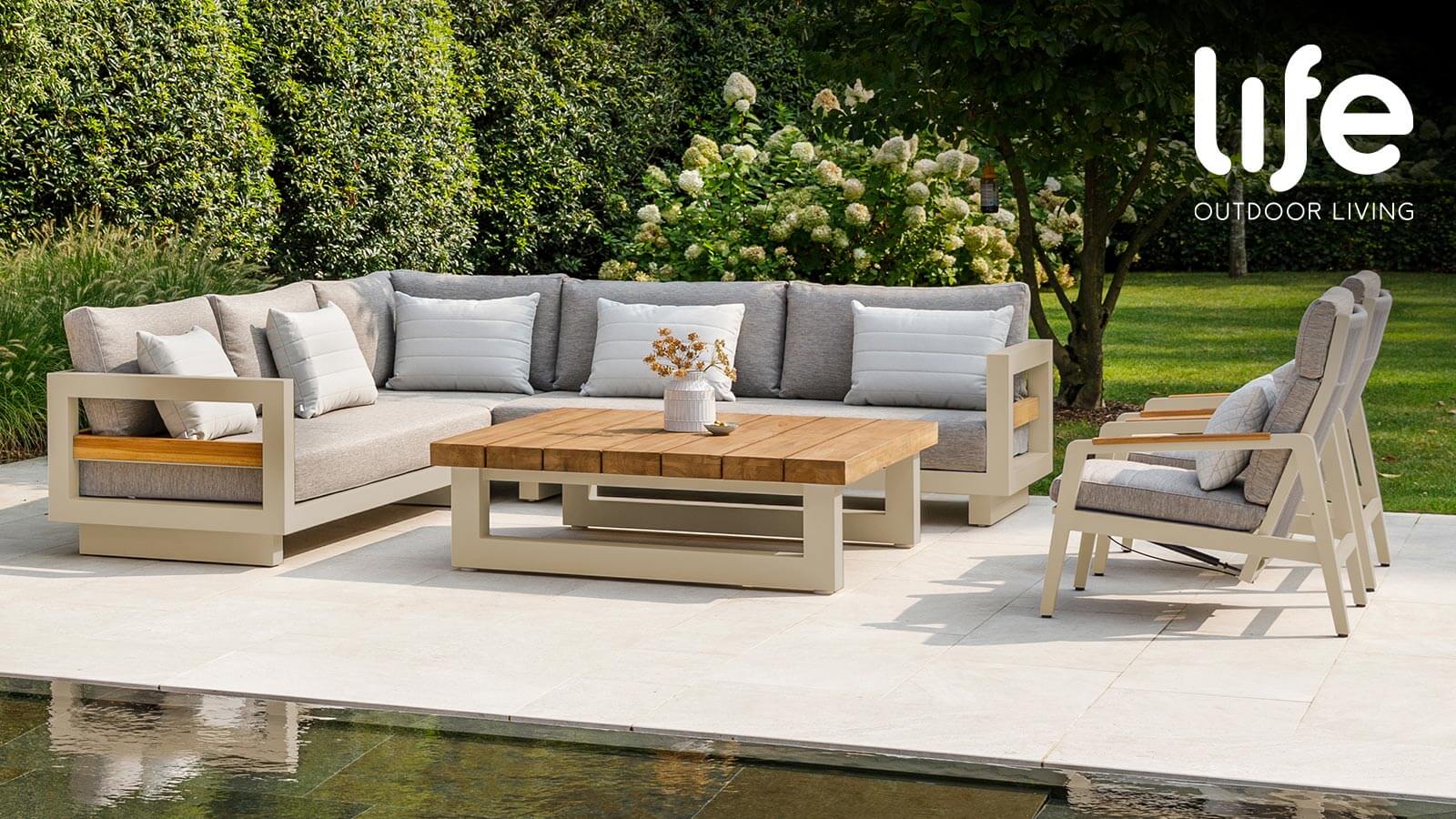Key Points:
-
V-Commerce Solves the "Confidence Gap": Virtual Shopping (V-Commerce) is the next evolution of retail, using 3D visualization, real-time customization, and Augmented Reality (AR) to replace the guesswork of static photos. It builds the same trust and emotional engagement as a physical store, leading to greater purchase confidence.
-
Scalable 3D Visualization is the Backbone: The transition is powered by advanced, scalable 3D visualization platforms (like Cylindo) that eliminate the limitations of traditional photography. This technology manages massive product catalogs, renders every variant instantly and photorealistically, and ensures accurate AR integration.
-
Virtual Shopping Drives Significant ROI: Adopting V-Commerce is a business necessity that delivers measurable returns. It results in up to a five-fold increase in conversion rates, a significant reduction in costly product returns (due to eliminating unmet expectations), and a lift in Average Order Value (AOV).
Scroll through any major e-commerce site and you’ll see the problem: rows of flat product photos and static descriptions trying to sell items meant to be touched, sat on, or experienced.
For high-value, configurable goods like a sofa, a car, or a dining set, 2D images simply don’t inspire confidence. Customers are left guessing:
- Will it look right in my home?
- Will the color match?
- What’s the real texture?
Traditional e-commerce was built for convenience, not confidence. But as products grow more customizable and expensive, convenience alone isn’t enough.
Enter Virtual Shopping, or V-Commerce, the next evolution of digital retail. V-Commerce blends 3D visualization, augmented reality (AR), and immersive storytelling to give customers the same level of trust and emotional engagement they’d get in a physical store, from anywhere in the world.
It’s not science fiction. Retailers across industries are adopting virtual shopping to drive engagement, reduce returns, and build loyalty. Powering this revolution behind the scenes are advanced 3D visualization technologies like Cylindo, which make it possible to scale photorealistic virtual experiences across entire catalogs.
In this article, we’ll break down what Virtual Shopping really means, the technology that makes it possible, and why it’s quickly becoming a necessity for every modern retailer.
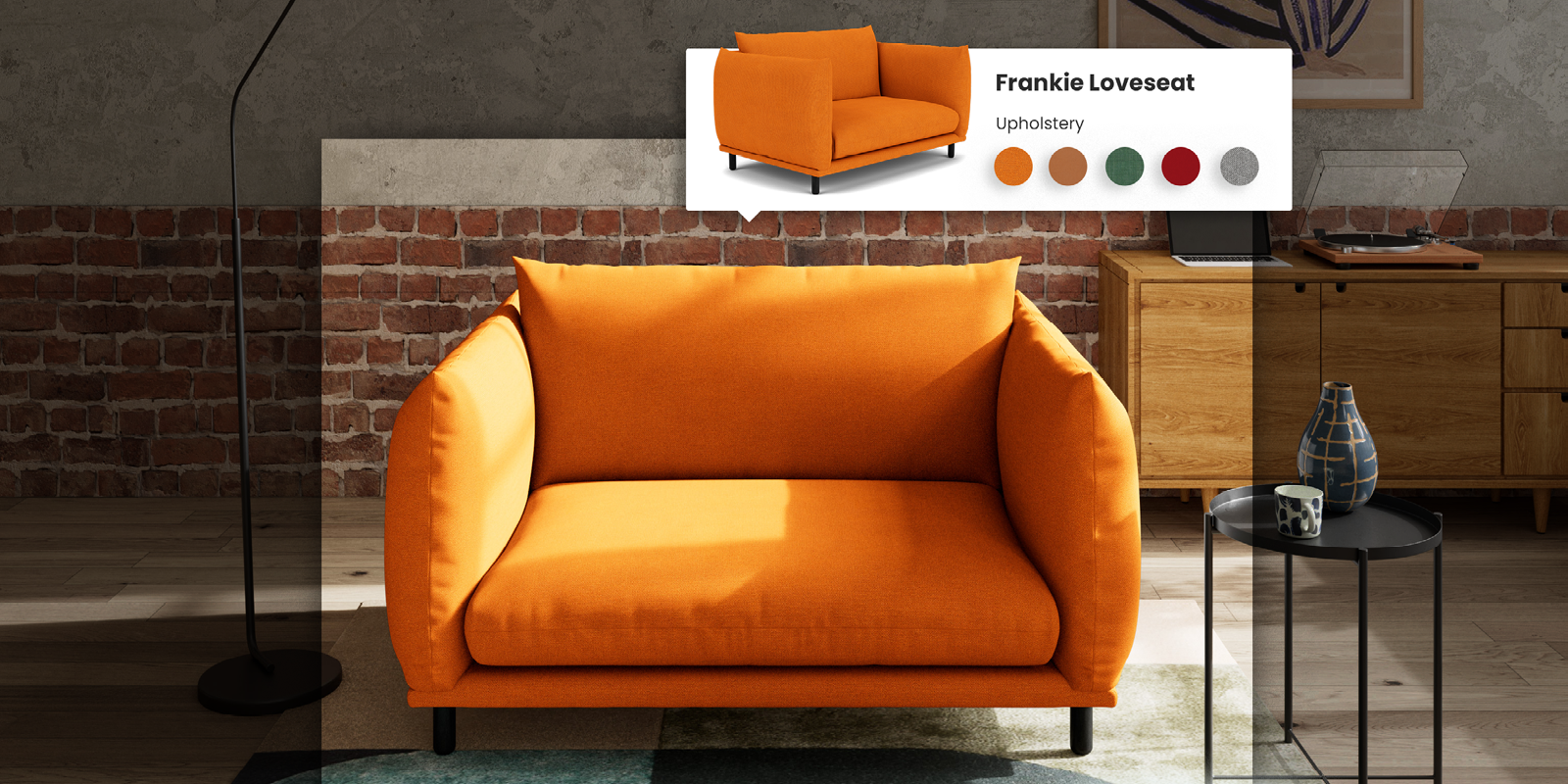
Defining the Virtual Shopping Experience
Virtual Shopping goes far beyond simply displaying a 3D model online. It’s about creating an immersive, confidence-building journey that replicates and enhances the in-store experience.
1. Photorealistic 3D Interaction
Customers can rotate, zoom, and inspect products in lifelike 3D. Imagine a shopper exploring a sofa online and being able to view every stitch, texture, and contour as if they were standing next to it in a showroom. This level of realism builds trust, engagement, and purchase confidence.
2. Real-Time Customization (V-Commerce)
True virtual shopping also means personalization in real time. Shoppers can instantly change fabrics, finishes, or configurations and see those updates rendered photorealistically. It’s the digital equivalent of working with a sales associate to design the perfect piece.
3. Augmented Reality (AR/Room View)
AR takes the experience a step further by allowing shoppers to place their customized product directly into their own space. By viewing a life-size, accurate version of that sofa or table through their phone, customers eliminate doubts about fit, color, and style before they buy.
4. Immersive Discovery
Virtual showrooms and interactive 3D tours expand this experience beyond single items. Retailers can recreate full store environments online, allowing customers to walk through collections, explore complementary products, and interact with their brand in a more intuitive way.
The result is a retail experience where guesswork is replaced by certainty. Shoppers no longer have to imagine how a product will look; they can see it, interact with it, and believe in their choice.
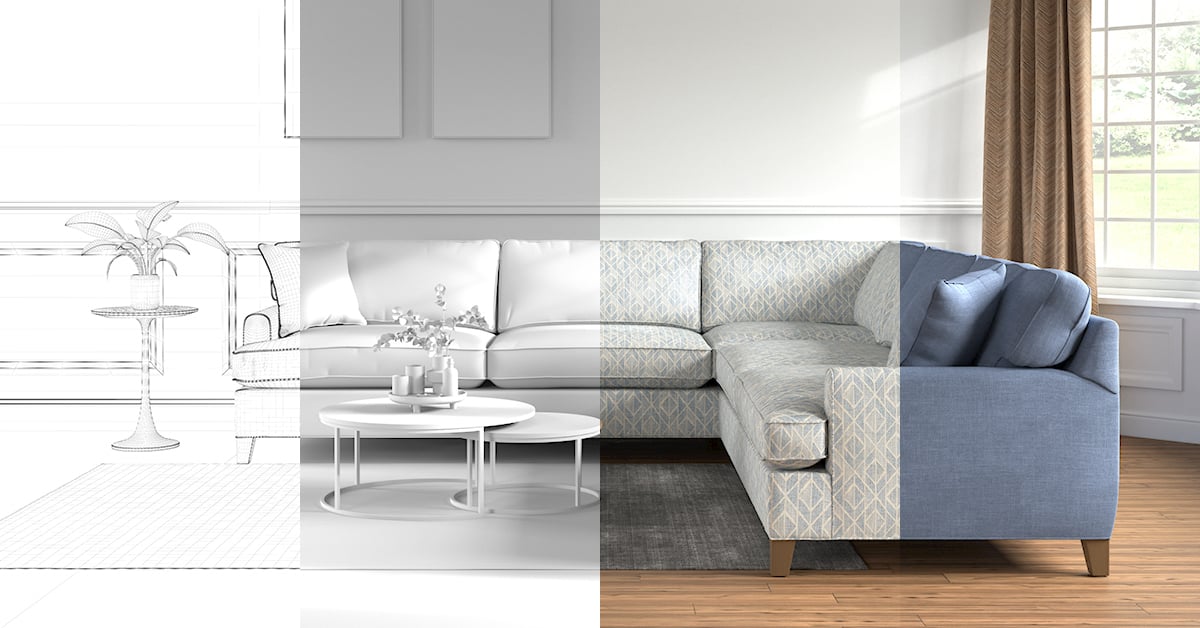
The Technology Backbone: 3D Visualization and Scalability
Behind every successful Virtual Shopping experience is a powerful visualization engine, and this is where Cylindo sets the standard.
The Problem with Legacy Tech
Traditional e-commerce platforms rely on photography and basic 2D configurators. These systems struggle with scale and accuracy. For configurable products, generating every possible image combination manually is both time-consuming and cost-prohibitive.
Even when possible, the visuals often lack realism, lighting accuracy, or interactive flexibility. As a result, shoppers see a fraction of what’s possible, leading to lower engagement and more hesitation.
The Cylindo 3D Advantage
Cylindo solves these challenges with a scalable, cloud-based platform that can manage thousands of SKUs and render every variant in real-time, photorealistic 3D.
This capability is crucial for V-Commerce, where the expectation is instant response and lifelike accuracy. With Cylindo, brands can deliver:
- Real-time configuration changes with photorealistic updates
- High-fidelity detail down to texture, grain, and lighting
- Consistent visuals across web, mobile, and in-store displays
Because the system is built for headless commerce, Cylindo’s 3D assets can be deployed anywhere, powering a retailer’s website, mobile app, or even interactive kiosks in physical stores.
AR Integration and Accuracy
AR is only as good as the 3D models behind it. Cylindo ensures that the AR experience is precisely scaled, optimized, and true to life, creating a seamless bridge between digital preview and physical reality. The same assets that power a website’s 3D configurator can instantly be used for AR or virtual showrooms, making deployment efficient and consistent.
The result is a unified, flexible visualization ecosystem that powers immersive retail at every stage of the customer journey.
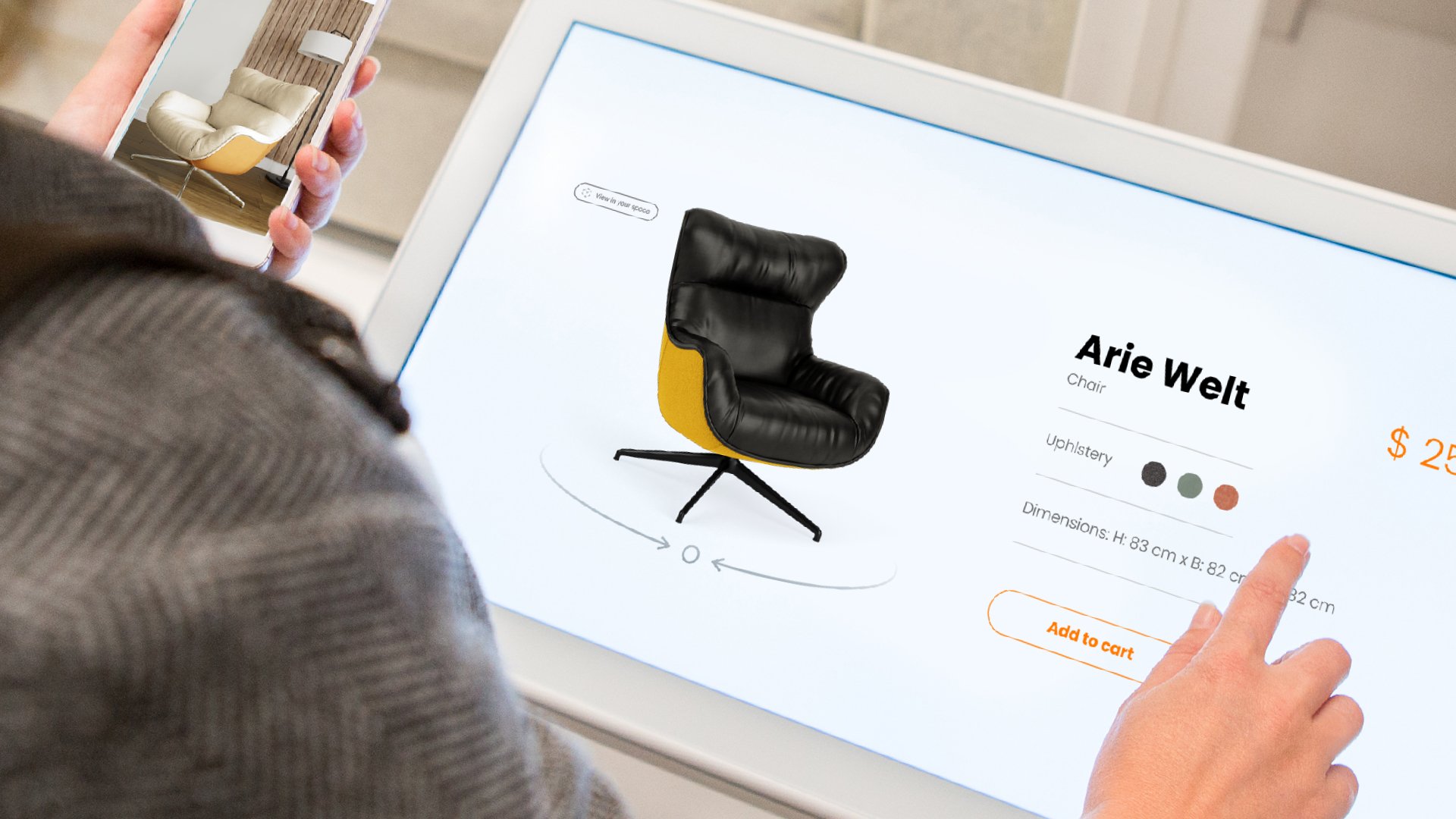
The ROI: Why Virtual Shopping Is a Necessity
Virtual Shopping isn’t just a technological upgrade; it’s a business transformation that delivers measurable returns.
1. Conversion Rates That Climb
When customers can see and customize products in 3D or AR, engagement skyrockets. Multiple industry studies show that shoppers who interact with 3D visuals are up to five times more likely to convert than those viewing static images. By replacing uncertainty with interactivity, brands turn browsers into buyers.
2. Reduced Return Rates
One of the costliest problems in online retail is product returns, often driven by unmet expectations around color, scale, or feel. Photorealistic 3D and AR eliminate those surprises. When shoppers know exactly what they’re getting, they’re more satisfied with their purchase, resulting in significantly lower return rates.
3. Increased Average Order Value (AOV)
Confidence drives ambition. When customers visualize their ideal product in detail, they’re more likely to explore upgrades or add-ons. A premium fabric or custom finish looks far more compelling in 3D, encouraging higher spend. Retailers leveraging virtual shopping frequently report double-digit lifts in AOV after implementing interactive visualization.
4. Future-Proofing the Retail Experience
Virtual Shopping is also the bridge to retail’s next frontier: the Metaverse and immersive VR commerce. Brands that invest in scalable 3D infrastructure today are building the foundation for future experiences, from digital showrooms to AI-driven design assistance.
In short, Virtual Shopping doesn’t just solve today’s e-commerce challenges. It positions retailers for the next decade of innovation.
The Future Is Virtual
Static product pages are a thing of the past. The retailers leading tomorrow’s market will be those who offer dynamic, confidence-driven experiences powered by immersive visualization.
V-Commerce is not just another e-commerce buzzword; it’s the new standard for customer engagement. It solves the online trust gap by giving shoppers everything they need to make confident decisions: realistic visuals, accurate AR previews, and interactive exploration.
Retailers who adopt scalable visualization platforms like Cylindo will not only boost conversions but also deliver a consistent, branded experience that extends from the web to the living room.
The future of retail isn’t about replacing stores. It’s about transforming every screen into a showroom.
Ready to Transform Your E-commerce into an Immersive Showroom?
Don’t let competitors capture the market with better digital experiences. Cylindo offers the scalable, photorealistic 3D visualization and AR technology you need to power your Virtual Shopping strategy, seamlessly integrated with your existing e-commerce ecosystem. Request a Demo today!

